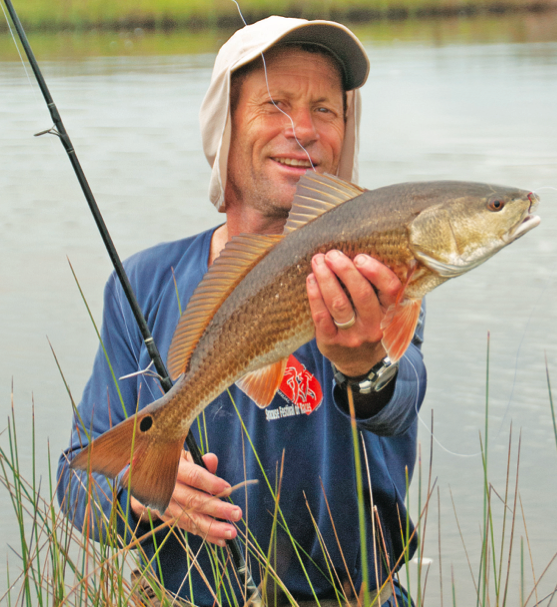[dropcap]I[/dropcap] used to train seriously for cross-country meets and road races, but these days, not so much. Thus, after a not-too-embarrassing performance at a recent 5K run, I confused a neighbor who asked how many miles I had been jogging weekly to prepare for the event.
“Oh, mostly I stay fit now by fishing,” I answered. My neighbor waited a few seconds for the punchline, then checked his leg, to see if I was pulling it. Finally he opined that most of the anglers he knew LOST fitness due to fishing, what with the associated beer consumption and grand slam breakfasts and hours of sitting and beer consumption and long lazy powerboat rides and beer consumption. In fact, says my friend, the only time he witnessed an angler catch his “second wind” was during a particularly long blowhard fish story.
I countered that my “adventure” fishing style mostly requires human-powered locomotion. Wading boots, mountain bikes, or kayaks get employed. Sometimes, all three on the same day. Invariably, the choicest spots – at least at the St Marks National Wildlife Refuge, where most of my treks originate – entail the most effort to reach. But the payoff is twofold: access to scads of under-pressured fish, and the health benefits of real exercise. That said, this kind of fishing is not for the physically unprepared. If you were to ask me “What are the three most important things I can do to gain fitness for adventure fishing?” I’d respond with three simple words:
Location. Location. Location. Wait, that’s the advice for realty success. Let me try again:
Little. Chocolate. Donuts. Oops, now I’m thinking of a John Belushi routine. Sorry! I meant:
Endurance. Specificity. Core. Well, that’s not even slightly amusing, so it must be what I really wanted to say. Let’s address endurance first. The single best measure of one’s endurance is what exercise physiologists call Maximal Oxygen Consumption (VO2max). The higher your VO2max, the farther you can wade, bike, or paddle at a brisk pace without surrendering to fatigue. You can get yours precisely measured at the Science of Speed lab on Capital Circle Northeast, or I can estimate it at the Maclay School track. The lab guys are more accurate, but I keep a defibrillator trackside. I’m almost positive I know how it works.
Now let’s add specificity. Regarding exercise, this simply means that fitness for a certain activity develops better if you can closely mimic that activity. For example, to prepare specifically for biking on St Marks Refuge levees, you should exercise on an upright stationary bike, rather than an elliptical machine at the gym. Ideally, find a gym five miles from your house. If you walk or bike to it and back every day, you don’t even need to join. By the way, I am specifically preparing for sweltering August temperatures at the Refuge by failing to have my car’s A/C repaired.
Finally, there’s core. Your trunk muscles comprise your core, and a strong core allows you to deliver more power to your legs when portaging a kayak across salt marsh mudflats. Have a hopelessly flabby core? Go with a tandem kayak, and recruit a buddy who owns six-pack abs.
Speaking of six-packs, I once wore a “Calorie-counter” pedometer while hiking to Palmetto Island from Lighthouse Road. It registered 1200 Calories burned that afternoon. My favorite beer has 200 Calories to the bottle. You do the math.

[easy-social-share]




